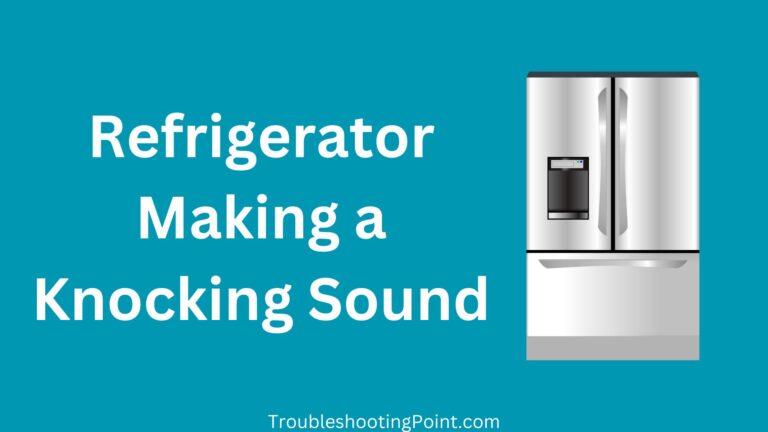Experiencing a fridge not working after a power outage is a common yet frustrating issue for many homeowners. This situation not only poses a challenge in preserving the freshness of your food but also raises concerns about the potential underlying damage to your appliance.
In this comprehensive guide, we delve into the essential steps to diagnose and resolve this problem. Our focus is to provide practical, easy-to-follow solutions to get your refrigerator back to its optimal functioning state, ensuring your food remains safe and minimizing any inconvenience caused by the outage. Stay with us as we explore effective troubleshooting techniques for when your fridge stops cooling after a power outage.
Initial Checks and Safety Precautions

Before diving into troubleshooting your fridge that’s not working after a power outage, it’s crucial to perform some initial checks while ensuring your safety. Here’s what you need to do:
- Inspecting the Fridge’s Power Cord: Start by examining the power cord of your fridge. Sometimes, power outages can lead to electrical surges that damage the cord. Look for any signs of shorting, such as burn marks or fraying. If you find any damage, the power cord will need to be replaced to prevent further electrical issues.
- Looking for Visual Signs of Electrical Damage: Beyond the power cord, inspect your fridge for any visible signs of electrical damage. This includes checking around the electrical outlet and the area where the cord connects to the fridge. Look out for burn marks or any other indications of damage. If you spot any, it’s best to contact a technician as handling damaged electrical components can be dangerous.
- Safety Measures: Before you start any form of troubleshooting, ensure the fridge is unplugged to avoid any electrical hazards. Additionally, if you’re not comfortable with handling electrical appliances, it’s advisable to seek professional help.
Troubleshoot: Fridge Not Working After Power Outage
1. Checking Different Components
- Inspecting the Compressor Engine: Begin by examining the compressor engine, a crucial component of your fridge’s cooling system. If your fridge isn’t turning on, or the compressor seems inactive, this could be a sign of failure. Check if other parts like the internal light, digital front faceplates, or fans at the bottom are working. If these parts function but the compressor doesn’t, it suggests a specific issue with the compressor engine.
- Testing Internal Lights and Other Features: Verify if the internal lights, digital displays, and fans are operational. These components can help you determine if the issue is isolated to the cooling system or affects the entire refrigerator.
2. Removing Extensions and Direct Power Connection
If your fridge is connected via an extension cord, remove it and plug the fridge directly into an outlet. Power outages can sometimes damage extension cords, especially if there was a surge before the power went out. Direct connection helps in ensuring that the issue is not with the extension cord.
3. Resetting the Main Control Board
The Main Control Board is like the brain of your refrigerator. If resetting your fridge doesn’t work, and the compressor isn’t functioning, it’s time to check the control board. It can fail due to wear and tear, moisture, or excessive heat. Resetting or replacing the Main Control Board might be necessary if it’s found to be the root of the problem.
4. Power Reset Process
A simple power reset can often solve minor glitches. Turn off the power to the fridge, either by unplugging it or switching off the breaker, and leave it off for at least five minutes. This process allows the fridge’s internal components to reset. After the wait, turn the power back on and check if the fridge starts functioning normally.
5. Additional Components to Check
- Thermostat Inspection and Replacement: The thermostat controls the temperature inside your fridge. If it’s faulty, it could prevent the fridge from working correctly. Inspect the thermostat, and if it appears damaged or malfunctioning, consider replacing it.
- Control Board Inverter Check: This component works alongside the main control board, specifically managing the compressor’s operation. If the compressor is not turning on, the inverter might be at fault and may need replacement.
Fix: Fridge Not Cooling After Power Outage
After identifying the root cause of why your fridge is not working after a power outage, it’s time to address these issues. Here’s how you can fix the common problems:
1. Replacing Damaged Power Cords
- If you find the power cord is damaged, unplug the refrigerator. Replace the cord with a new one that matches the specifications of your fridge. This task may require some basic electrical skills; if you’re unsure, it’s best to contact a professional.
2. Repairing or Replacing the Main Control Board
If the issue is with the Main Control Board, resetting it might solve the problem. If not, the board may need to be replaced. You should refer to the manufacturer’s guide for specific instructions or consider hiring a technician, as this involves handling intricate electronic components.
3. Fixing or Replacing the Compressor Engine
A non-functional compressor engine can be a complex issue. If tests indicate a compressor problem, it’s often best to seek professional help. Repairing or replacing a compressor is a significant task that usually requires specialized skills and tools.
4. Replacing the Thermostat:
If the thermostat is faulty, purchasing a compatible replacement is necessary. Replacing the thermostat involves disconnecting the old one and installing the new one, ensuring all connections are secure. If you’re not comfortable with this task, seek professional assistance.
5. Addressing Control Board Inverter Issues
If the control board inverter is the problem, similar to the main control board, it should be replaced with a part that matches your fridge’s model. This component is crucial for the compressor’s operation, so accuracy in replacement is key.
6. Brand-Specific Repair Tips
- For Samsung fridges, a reset might often do the trick, but if there are specific issues like a non-working inverter board, a replacement part specific to Samsung models will be required.
- LG refrigerator repairs after a power outage may include resetting the fridge or checking the circuit breaker. Complex issues might require replacement parts specific to LG models.
- With GE refrigerators, problems might range from needing to clean or replace the condenser coils to fixing the start relay. Each of these repairs requires specific steps as per GE guidelines.
In all these repairs, remember safety is paramount. Always unplug the fridge before attempting any fixes and follow the manufacturer’s instructions. If the repair seems complex or you’re unsure about the process, it’s wise to call a professional appliance repair technician. Doing so not only ensures safety but also the longevity and efficiency of your fridge.
Conclusion
Addressing the issue of a fridge not working after a power outage requires a careful and methodical approach. Whether it’s a simple reset, replacing a faulty component, or seeking professional assistance, each step is crucial in restoring your refrigerator’s functionality.
Remember, quick and appropriate actions not only ensure the longevity of your appliance but also safeguard the freshness and safety of your stored food. By following the guidelines and solutions outlined in this article, you can effectively tackle the challenge of a fridge not cooling after a power outage, ensuring peace of mind and continued convenience in your daily life.
Read More:



